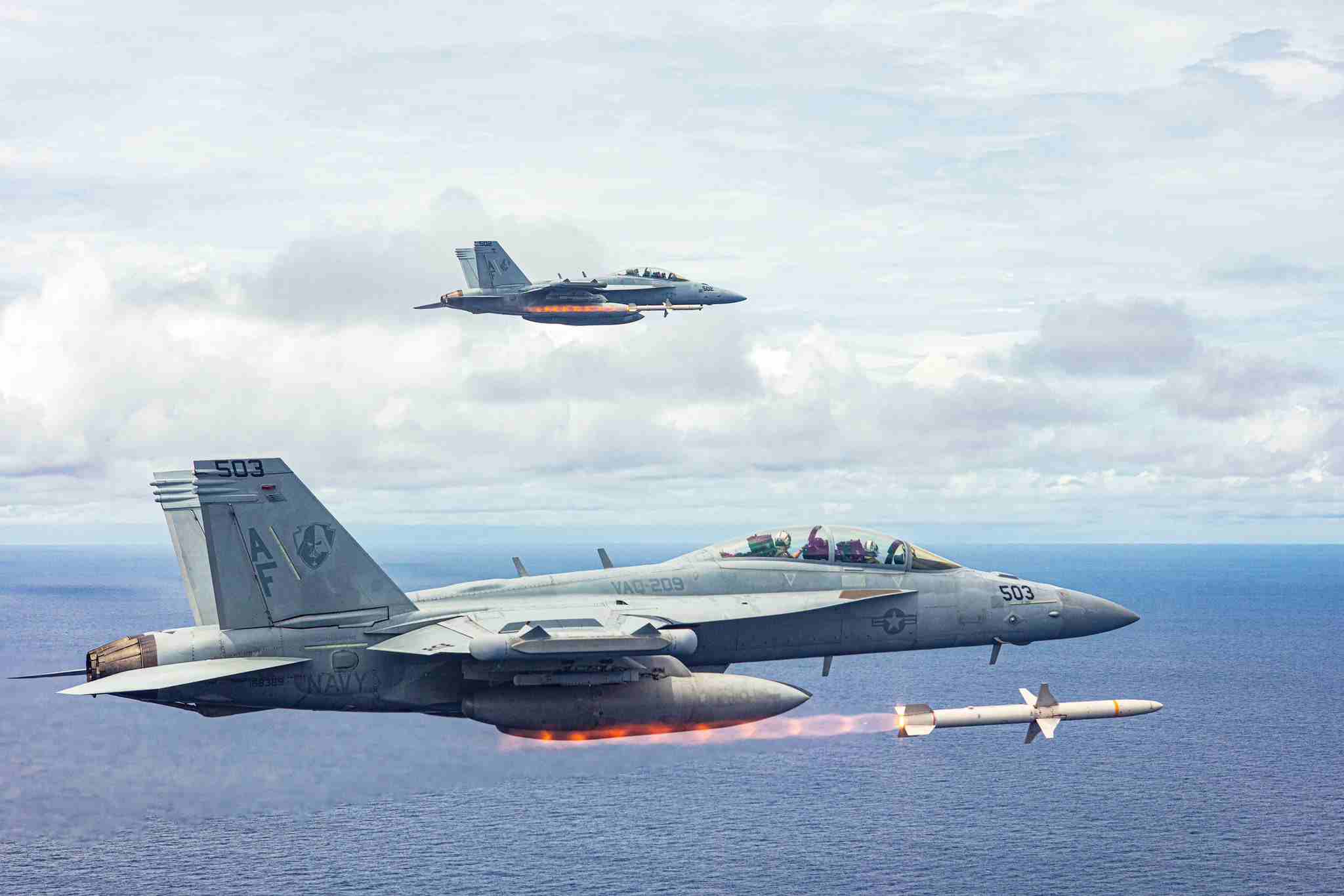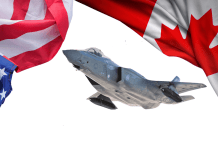A US Navy’s EA/18G ‘Growler’ electronic attack aircraft crashed in Washington. The fate of the two crew members onboard is still not known. The aircraft that went down belonged to Electronic Attack Squadron 130, nicknamed ‘Zappers,’ and was recently deployed to the Red Sea to take on the Houthi rebels.
The US Navy fighter jet was on a regular training mission when it crashed east of Mount Rainier in Washington.
The cause of the crash was unknown. A search and rescue mission is on to locate the crew of the ill-fated aircraft.
The Growler is “the most advanced technology in airborne Electronic Attack and stands as the Navy’s first line of defense in hostile environments.” The 130 Squadron “Zappers” was commissioned as the Carrier Early Warning Squadron 13 in 1959.
The Zappers also carried out some 700 combat missions” to degrade the Houthi capability to threaten innocent shipping,” according to a press release announcing the squadron’s return to Washington in July.
During its nine-month deployment to the region, the EA-18G Growler was deployed on the supercarrier USS Dwight D. Eisenhower. There, it scored its first air-to-air kill by knocking down a Houthi drone. The Growlers were at the forefront of the US defense against the Houthi rebels in the Red Sea and ashore Yemen.

Growlers from Eisenhower’s air wing also employed AGM-88E Advanced Anti-Radiation Guided Missiles (AARGM) for the first time in combat in the course of those operations, including in a strike that destroyed a Mi-24/35 Hind gunship helicopter on the ground.
A drone kill marking, as well as two other “victory marks” denoting successful air-to-ground strikes, was seen on the side of an EA-18G with the tail number 501 in a brief video that Eisenhower’s commanding officer Captain Chris “Chowdah” posted on social media on July 14.
The EA-18G Growler is the most advanced airborne electronic attack (AEA) platform and is the only one in production today. The electronic assault aircraft has the speed and maneuverability of a fighter aircraft, enabling it to locate, record, and digitally jam enemy communications. Its enhanced radar picture resolution, targeting, and tracking range enable it to self-protect against hostile aircraft. In a setting where radio communications are severely blocked, it can provide uninterrupted service.
The EA-18G is capable of self-protection, freeing up dedicated escort aircraft for strike and other missions. It is also capable of rapidly locating and destroying surface-to-air missiles.
By combining two proven systems, the Boeing F/A-18F and the Northrop Grumman ALQ-218(V)2 receiver, the US Navy has created the potent platform EA-18G.
Growler & Super Hornet
The United States Navy’s EA-18G Growler looks similar to the F/A-18 Super Hornet, but it is a very different aircraft. The two aircraft share 90 percent commonality.
The EA-18G Growler is an iteration of the F/A-18 and was built as a replacement for the Navy’s previous carrier-borne EW aircraft, the EA-6B Prowler, which was retired in 2019 after 48 years of service.
As a multirole fighter, the Super Hornet is capable of carrying out a variety of mission types. The Growler is an electronic warfare aircraft specifically designed to identify, disrupt, and destroy an enemy’s air defense system. It provides tactical jamming and electronic protection to US military forces and allies.
Although the EA-18G Growler made its combat debut in 2011 during Operation Odyssey Dawn, imposing a UN no-fly zone over Libya, it had not achieved any air-to-air kills until its most recent deployment to the Red Sea with the Eisenhower carrier strike group. The Squadron had carried out seven pre-planned strikes against Houthi-controlled areas in Yemen.
The Growler test aircraft, first produced in 2004, was delivered to Electronic Attack Squadron VAQ 129 in 2008, and its first operational capability followed in 2009.
The Growler is equipped with advanced electronic warfare pods and radar-seeking air-to-surface guided missiles, like the Advanced Anti-Radiation Guided Missile (AARGM). The US Navy has been investing in the Growler’s capabilities for decades.
Boeing has been awarded a $95.8 million contract to provide testing and installation support for the Next Generation Electronic Attack Unit. The contract includes developmental and operational testing. Boeing will also produce and deliver 25 NGEAU A-Kits, 25 Gunbay Pallet A-Kits, 15 NGEAU B-Kits, and nine spare B-Kits.
Growler’s Zapping skills
The Growler’s electronic attack systems attack adversaries from all angles using its array system. These systems can autonomously give direction from one set of arrays to another, ensuring efficient communication and delivery of payloads.
This autonomy is important for fire control radar systems, as they can perform tasks around the platform while making turns. Including sensors and other components in these systems contributes to effective defense. Active Electronically Scanned Array (AESA) can perform various tasks differently than steerable arrays, making them ideal for electronic attack systems.
The ability to use an AESA to attack many targets simultaneously. This makes it possible to travel quickly between targets and keeps the attacker’s movements hidden from threat radar. It is possible to multiply this capability on several platforms, including different kinds of aircraft.




